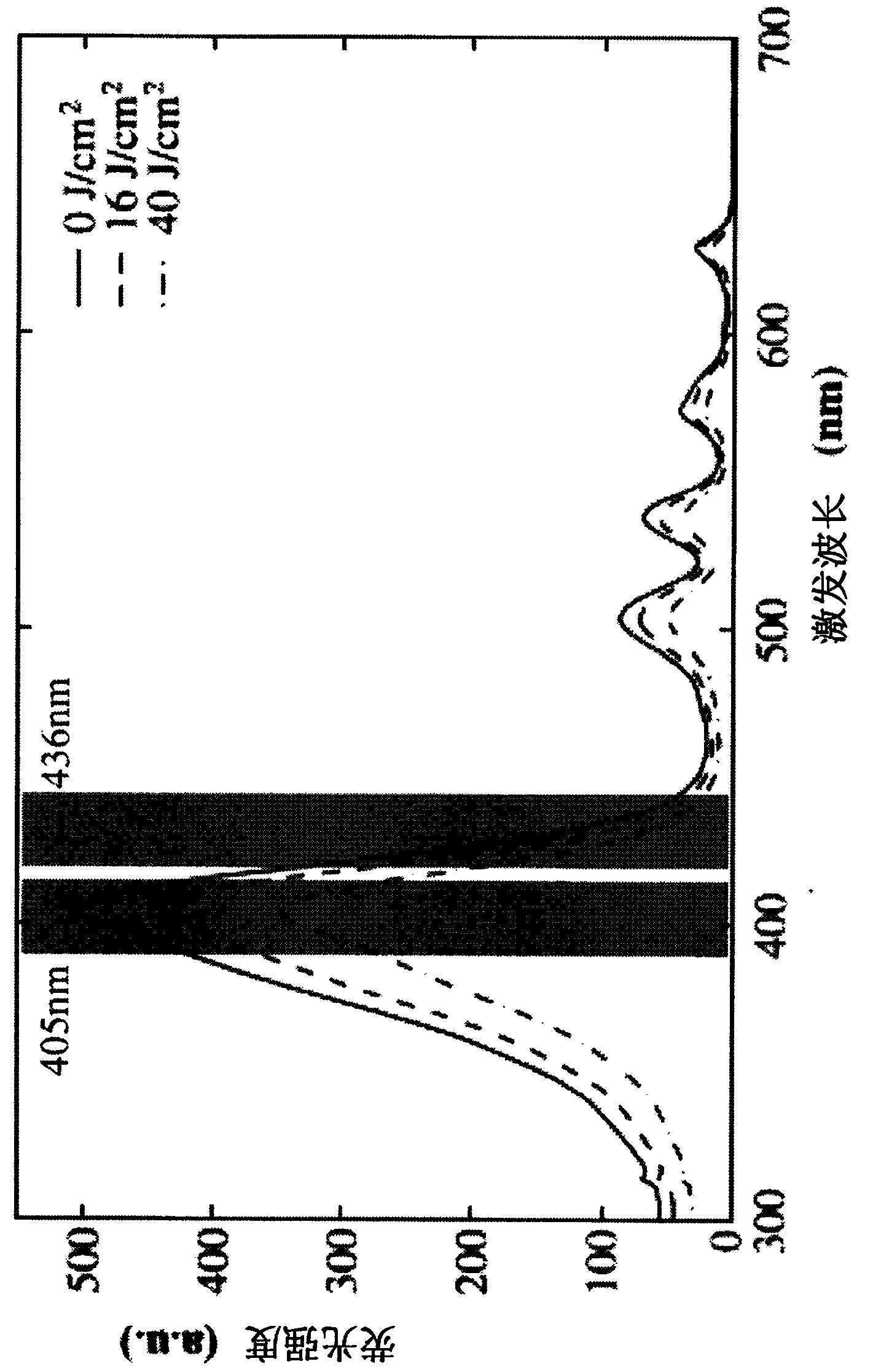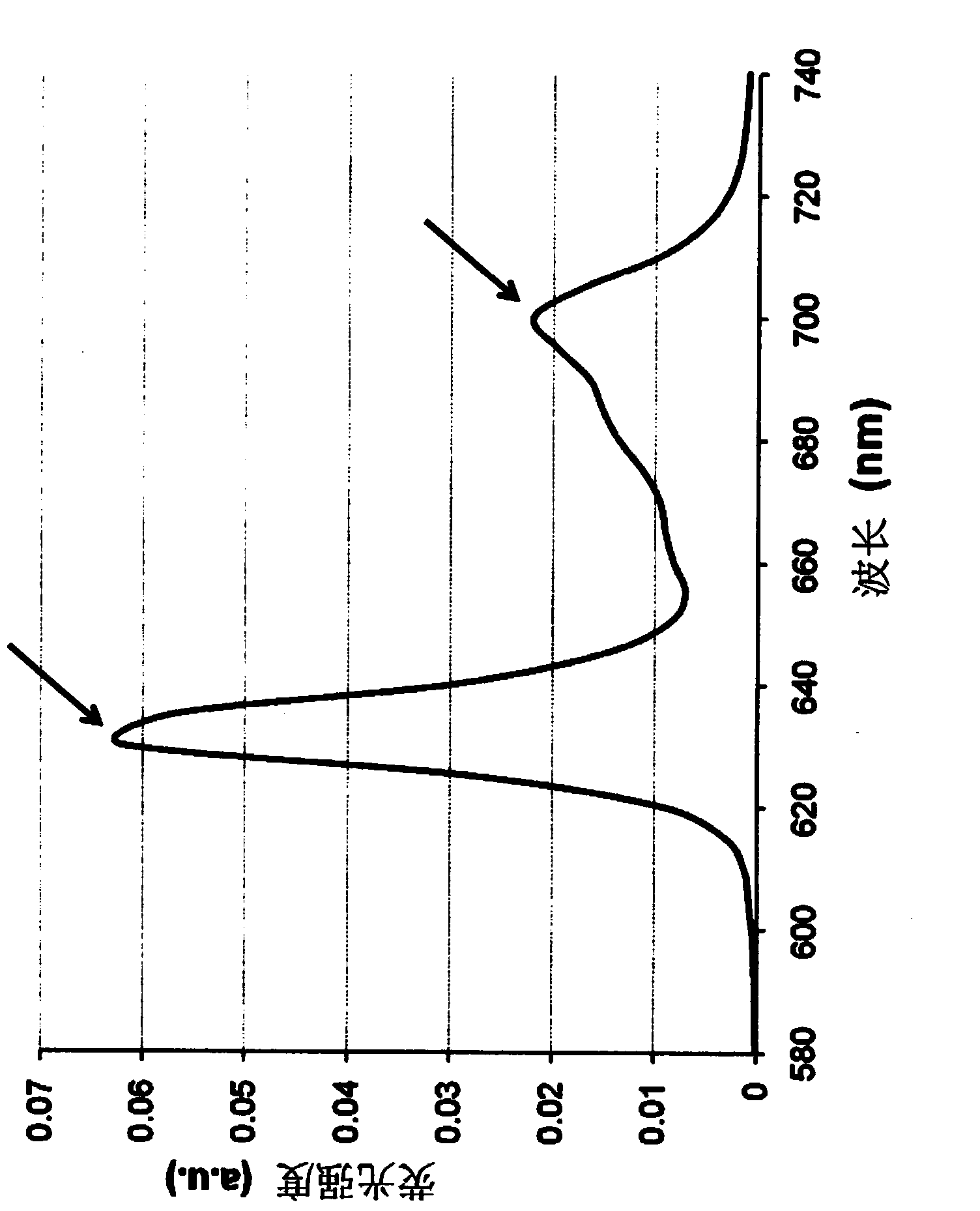Tumor site identification device and method
A technology for identifying devices and tumors, applied to measurement devices, analysis using fluorescence emission, sensors, etc., can solve problems such as hindering PpIX fluorescence detection, achieve accurate and rapid diagnosis, improve surgical results, and reduce the effect of surgery
- Summary
- Abstract
- Description
- Claims
- Application Information
AI Technical Summary
Problems solved by technology
Method used
Image
Examples
Embodiment 1
[0133] After administering 5-ALA to the gastric cancer cell line (MKN-45) and culturing for 3 hours, the excitation light of 436 nm was continuously irradiated, and the spectrum was measured at regular intervals. Compared with the PpIX solution, although the rate of change is different, the same tendency (decrease of the peak at 635nm and increase of the peak at 675nm) was observed in cultured cells ( Figure 10 ). In addition, it was confirmed that the ratio (I 675 / I 635 ) depends on the exposure and rises ( Figure 11 ). However, the rate of change was lower than in the case of using the PpIX solution.
Embodiment 2
[0135] To graphically capture spectral changes, ratiometric imaging was performed. That is, under 436nm excitation light, spectral images of 635nm and 675nm were acquired at regular intervals of light irradiation, their ratio images were created, and changes in the ratio images on the left and right sides of irradiation were observed. The result is as Figure 12 shown. Similar to the results of the spectrometry, it was shown that the brightness of the ratio image gradually increased with light irradiation.
Embodiment 3
[0137] In the same manner as in Example 2, ratiometric imaging was performed by simultaneously observing the cell suspension of cancer cells and collagen fibers after administration of 5-ALA.
[0138] Although cancer cells and collagen cannot be distinguished in each spectroscopic image, if each ratio image (I R pre and I R post ), and then make its ratio (I R post / I R pre ), it is clear that only the site where PpIX exists is imaged as a higher value than the surrounding area ( Figure 13 ).
PUM
 Login to View More
Login to View More Abstract
Description
Claims
Application Information
 Login to View More
Login to View More - R&D
- Intellectual Property
- Life Sciences
- Materials
- Tech Scout
- Unparalleled Data Quality
- Higher Quality Content
- 60% Fewer Hallucinations
Browse by: Latest US Patents, China's latest patents, Technical Efficacy Thesaurus, Application Domain, Technology Topic, Popular Technical Reports.
© 2025 PatSnap. All rights reserved.Legal|Privacy policy|Modern Slavery Act Transparency Statement|Sitemap|About US| Contact US: help@patsnap.com



